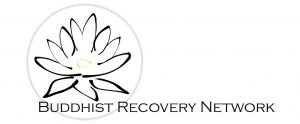By Debra Greenfield –
What makes a Buddhist Recovery meeting different from other recovery meetings? The first difference is that we begin all meetings by practicing Buddhist mindfulness meditation together. The amount of instruction will vary with each meeting, depending on the meditation background and credentials of the calendar. For peer facilitated groups, audio CDs of meditations can be used, as well as someone in the group reading a meditation from a book or article by a skilled meditation teacher, with everyone practicing together. Most of the time, am simple statement of intent to sit and meditate, someone ringing a meditation bell to begin the sitting and then again to end, anywhere from 10-30 minutes on average is sufficient. Members who are new to meditation can be guided for the first few minutes to be aware of their posture, bring their mindfulness to the sensation of their breath and when their mind wanders, gently bring it back to the breath. Counting each breath, or the rising and falling of the chest or abdomen are good beginning guidelines.
It is also good to let each person have their own experience in their first initial meditations without too much instruction. Guided meditations other than Samadhi (concentration on the breath) are generally not recommended. We want to practice mindfulness of our breath and of our mental states, both the kilesa (unwholesome mental states) and the kusala citta (wholesome mental states), observing them arising and passing away, to bring us to the awareness of the impermanence of our thoughts, in particular craving and aversion. These tools are helpful to those in recovery from addictive behaviors as we learn not to react to our mental states, but merely observe their characteristics with serenity and mindfulness.
Another aspect of Buddhist recovery is the study of The Buddhas teachings, or Dharma as related to addiction recovery. There are many original Suttas (discourses by The Buddha to his disciples) that relate suffering to craving and aversion, as well as The Four Noble Truths and The Noble Eightfold Path that can be read and discussed at meetings. Some meetings use these as the basis of a recovery program; information about these groups can be found on our website. There are also many modern Dharma teachers who have written books on Buddhism and addiction recovery that have a wealth of information that can be shared in a group.
Without a qualified Dharma instructor, it is best for peer groups to stick with the books or articles written by modern Buddhists like Noah Levine, Kevin Griffin and Darren Littlejohn or Spiritual leaders like Thich Nhat Hanh, Pema Chodren or even the Dalai Lama on compassion, community and living a wholesome life through the practice of Sila (morality) as laid out by The Buddha. Many groups like to read a book together and discuss it at the meeting. There are recovery book study meetings that are easy to start and facilitate that can be very rewarding. A list of recommended books can be found in the “books” section of this website.
The last difference is the open sharing and “mindful listening” that is practiced in Buddhist Recovery groups. Having an open discussion time when each member is invited to share the celebrations and challenges of life opens up the door to true connection with your sangha members. “Mindful listening” is something that should be practiced at every Buddhist Recovery meeting, using the skills we learn with our meditation practice to be in the present moment when others are sharing, listening with an open heart, practicing compassion and equanimity, without cross talking or commenting. In “mindful listening” we are acting as sacred witness to another person. We listen only to them, not thinking about anything else, and when our mind wanders, gently bring it back to their share.
This is a skill that we can take out into our daily life and practice with friends, family and co-workers that changes the way we interact with people. In combination with establishing a regular meditation practice, we practice staying in the present moment no matter what the circumstances are around us, and learn to interact with others with serenity and non- judgement. Also, being on the receiving end of someone who is mindfully listening to us creates a very deep sense of trust and genuine caring within the group.
When starting a Buddhist Recovery group, remember these things as keys to creating a place where people can come together to meditate and read Dharma together, practicing loving kindness (metta), compassion (karuna), joy at a sangha members happiness or success (mudita) and listening quietly and openly with non-judgement (upekkha). These four things are the Brahma Viharas, and when we practice them together in our groups, we become better human beings for ourselves and everyone who comes into contact with us.
September 2012


